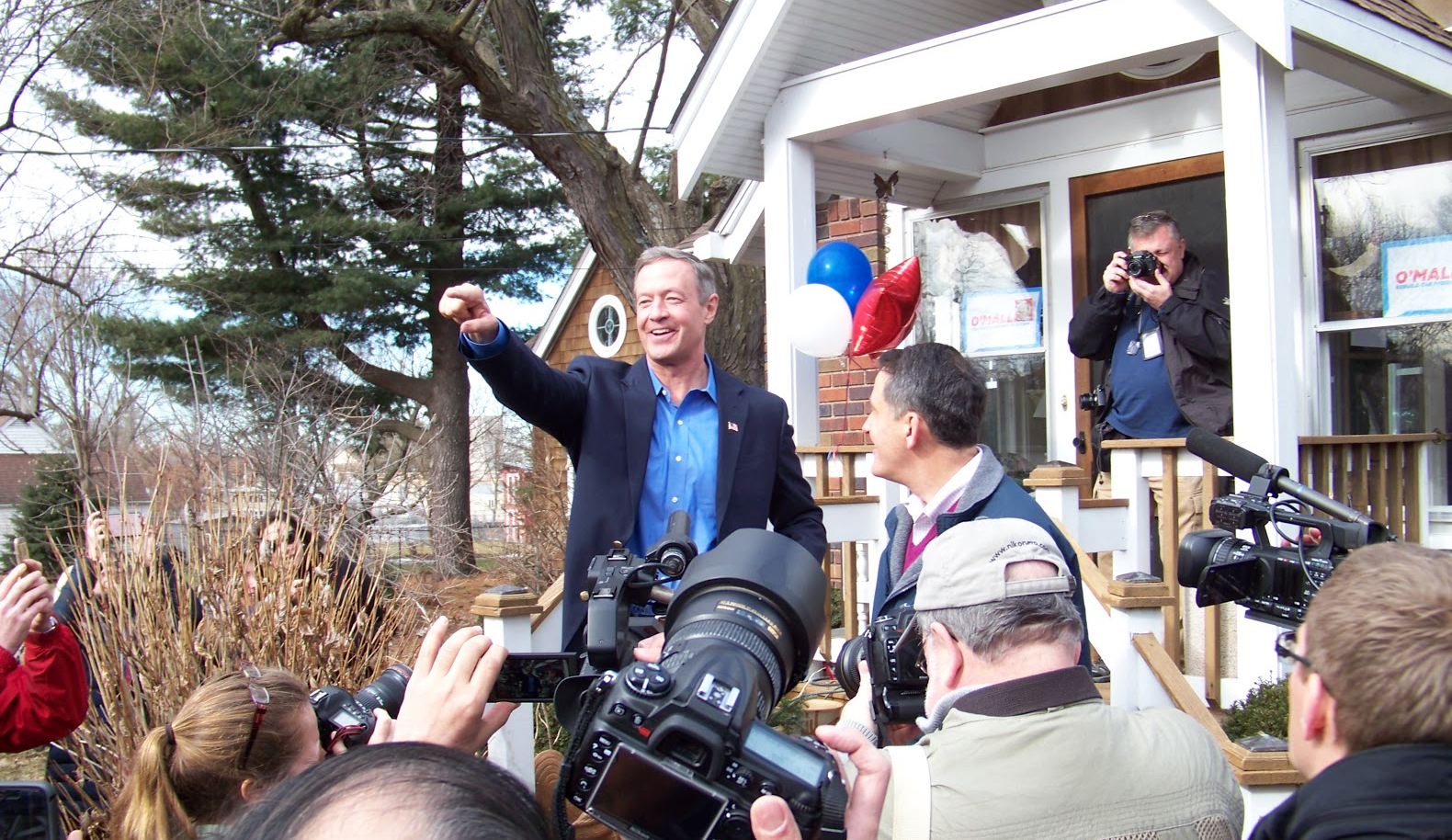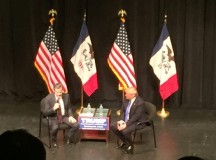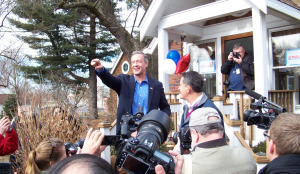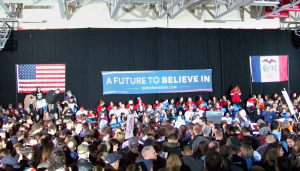
Students who travel to Iowa for their first Iowa caucus rallies may be surprised by the variety of events and the people who attend them. No two rallies are exactly alike, each differing in location, venue, speakers and even level of security.

My first political rally was the Donald Trump rally Jan. 30 in Davenport, Iowa. As a newbie caucus-goer and fledgling reporter, I was more than a little nervous. To my and Chad Davis’, executive producer for TMN TV, surprise, we underwent strict security measures — bag searches, bomb sniffing dogs and metal detectors — before we were allowed in the building, only to find a relatively unstructured event inside.
A far cry from the spectacle most Trump events evoke, this rally drew a large but subdued crowd. A mixture of ages and political backgrounds, most people seemed to want a chance to see Trump in the flesh and hear a little more about his policies.
A moderator played the role of interviewer for Trump, who sat on a stage facing orderly rows of seated spectators. After participating in a question and answer period with Jerry Falwell, Jr., president of Liberty University, that reminded me vaguely of something from a talk show, Trump descended from the stage to sign a few autographs before being whisked away by Secret Service.
Compare that to the Sunday events I attended and you’ll notice a lot of differences. Less popular candidates such as former Maryland Gov. Martin O’Malley and former Sen. Rick Santorum appeared at small house party rallies.

The O’Malley rally provided an intimate setting for the former governor to meet with local supporters and media before participating in some door-to-door campaigning. The upside to this type of rally? The media have direct access to the candidate. The downside? The media have direct access to the candidate.
By allowing general supporters and media into his launch party, O’Malley was able to reach badly needed Iowa voters while appearing approachable. Although O’Malley was able to answer the questions of anyone and everyone who attended the event, he ran the risk of being overrun by the media.
Santorum, who also appeared at a house party, countered this obstacle by simply kicking the media out after a few minutes. The difference between his party and O’Malley’s was that Santorum’s required an invitation to attend. After the media were given a few minutes to ask the former senator questions, they were asked to leave while Santorum continued to meet with those who had been expressly invited.
It seems strange to me that a politician would be willing alienate the media in favor of a handful of supporters, especially given Santorum’s low showing in recent polls. While O’Malley’s house party made the governor appear approachable and gave him much needed press, Santorum came off uncaring what the media or common Iowan thought of him. As a member of the media I still wonder what the purpose of his rally was.
Across the city of Des Moines, Sen. Bernie Sanders hosted a rally that couldn’t have been more different from the structure of his opponents’. Held in a large arena, Sanders’ rally drew a crowd of people that stretched out the door. The endorsements from political figures and actors lasted for more than an hour before attendees even got a glimpse of the Democrat senator.

But the crowd responses to Sanders were by and large the most enthusiastic of the day. The spectacle of celebrity appearances, bright lights and a come one, come all attitude seemed to reverberate with the audience in a way that not even O’Malley’s intimate neighborhood gathering did.
With such marked differences in campaign styles and rally formats, I can’t help but wonder why each candidate chose the approach they did. It’s possible that it all comes down to money. Candidates such as Trump and Bernie have either the funds or the support they need to host gargantuan rallies while O’Malley and Santorum don’t have access to the type of funds it takes to put on an event like that.
